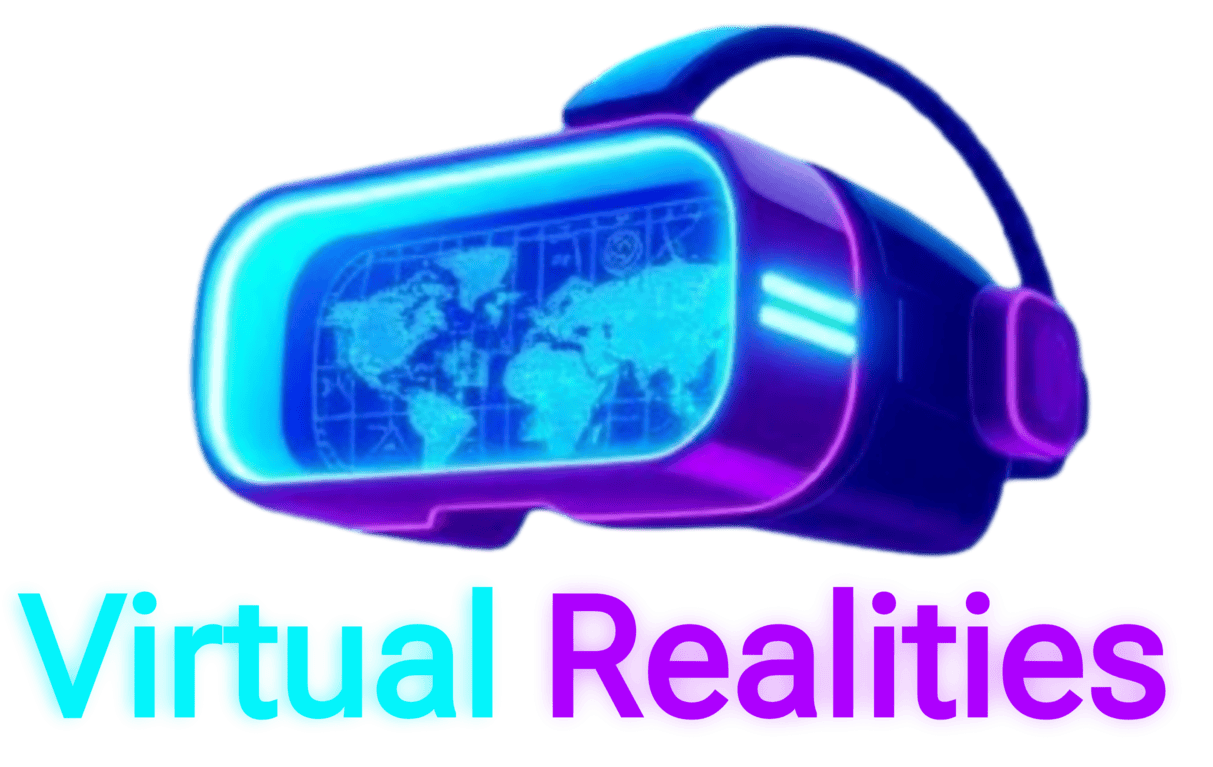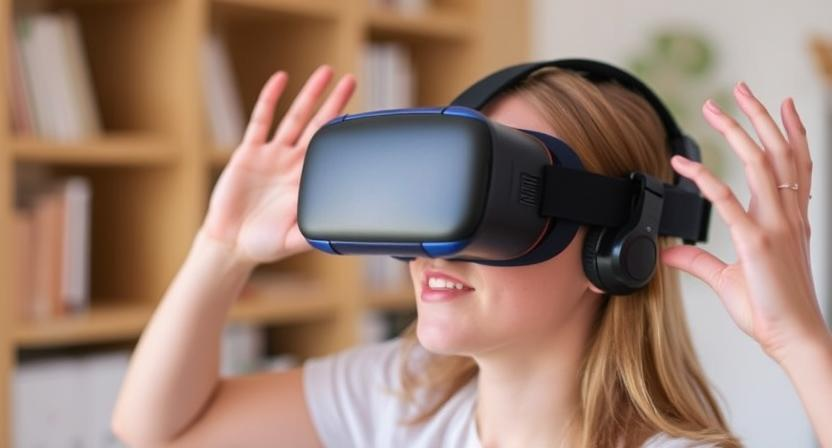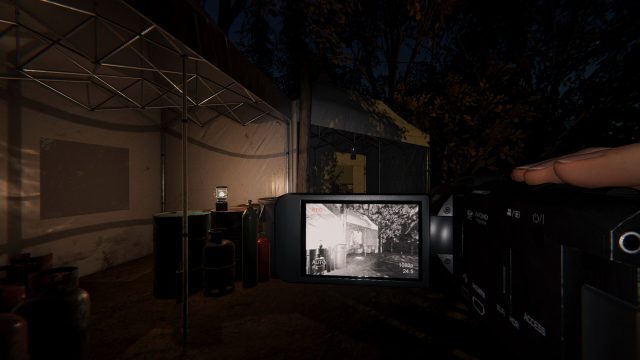The Impact of 5G on Virtual Reality Technology
The advent of 5G technology has brought a significant transformation to the virtual reality (VR) landscape. With its enhanced speed and low latency capabilities, 5G has revolutionized the way users engage with VR experiences. The improved resolution and graphics quality facilitated by 5G connectivity have elevated the realism and immersion in virtual environments, unlocking new realms of possibilities for VR applications across various sectors.

Moreover, the increased accessibility to VR content through 5G networks has democratized the usage of VR technology, enabling a wider audience to partake in immersive experiences. The seamless streaming of VR content with 5G connectivity has not only enhanced user convenience but also paved the way for more interactive and engaging VR environments.
Enhanced Speed and Low Latency in VR Experiences
With the advent of 5G technology, the realm of virtual reality experiences is undergoing a significant transformation. The enhanced speed and low latency offered by 5G networks are revolutionizing the way users interact with VR environments. This accelerated connectivity translates into seamless, real-time interactions within virtual worlds, eliminating the lag that could disrupt immersion in VR experiences. The reduced latency also allows for quicker response times to user inputs, making interactions more natural and fluid. Users can now navigate through virtual environments with increased responsiveness and accuracy, enhancing the overall realism of their VR encounters.

In addition to the boost in speed and low latency, 5G is paving the way for a new era of multiplayer VR experiences. With virtually instantaneous data transmission enabled by 5G networks, users can engage in collaborative virtual activities with others across vast distances without encountering significant delays. This advancement in connectivity opens up exciting possibilities for shared virtual adventures, social VR interactions, and multiplayer gaming experiences that feel more immersive and dynamic than ever before. The combination of enhanced speed and low latency in VR experiences powered by 5G is propelling virtual reality technology into a realm of unprecedented interactivity and engagement.
Improved Resolution and Graphics Quality in VR
With the integration of 5G technology, virtual reality (VR) experiences are reaching new heights in terms of resolution and graphics quality. Users can now immerse themselves in incredibly detailed and lifelike environments, thanks to the enhanced connectivity and data speeds provided by 5G networks. From crisp textures to vibrant colors, the level of visual fidelity in VR content is elevating the overall immersive experience for users across various applications and industries.

Moreover, the improved resolution and graphics quality in VR are not only enhancing entertainment experiences but also revolutionizing how we approach education, training, and simulations. The clarity and realism achieved through 5G-powered VR enable educators, trainers, and professionals to create more engaging and interactive learning environments. Whether it’s exploring historical landmarks in high definition or practicing complex surgical procedures with precision, the increased visual quality in VR content is opening up endless possibilities for innovative uses in diverse fields.
Increased Accessibility to VR Content with 5G
One of the key advantages of integrating 5G technology into virtual reality (VR) experiences is the enhanced accessibility it offers to users seeking immersive content. With the high-speed connectivity and low latency provided by 5G networks, individuals can easily access and enjoy a wide range of VR applications without experiencing lags or buffering issues. This increased accessibility not only allows for smoother interactions within VR environments but also opens up new possibilities for diverse user demographics to engage with this groundbreaking technology.
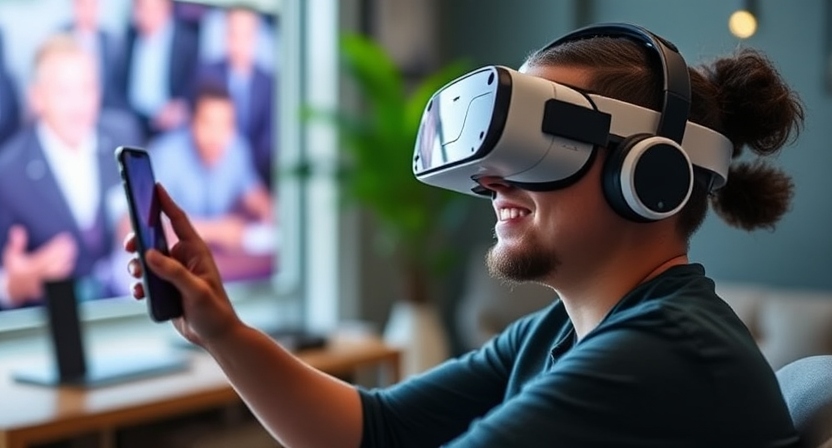
Furthermore, the improved accessibility to VR content with 5G facilitates the seamless sharing and distribution of immersive experiences across different devices and platforms. Whether it is for entertainment, education, or professional purposes, individuals can now effortlessly stream and download VR content with unparalleled speed and efficiency. This level of accessibility empowers users to explore virtual worlds, engage in interactive simulations, and collaborate in innovative ways, ultimately transforming the landscape of VR usage across various industries.
Seamless Streaming of VR Content with 5G Connectivity
Streaming VR content seamlessly has been a long-standing challenge due to the large data requirements and real-time responsiveness needed for an immersive experience. However, with the advent of 5G connectivity, this hurdle is being effectively tackled. The high-speed and low-latency nature of 5G networks allows for smooth and uninterrupted streaming of VR content, enhancing the overall user experience.

By leveraging 5G technology, VR streaming is no longer plagued by lags or buffering issues, enabling users to fully immerse themselves in virtual environments without disruptions. This advancement not only benefits individual users but also opens up new possibilities for industries such as gaming, education, healthcare, and more, where seamless streaming plays a critical role in delivering content effectively. The fusion of VR and 5G connectivity marks a significant step forward in the evolution of immersive technologies, promising a future where high-quality virtual experiences can be accessed effortlessly and seamlessly.
Enhanced Interactivity and Realism in VR Environments
One of the most significant advancements brought about by the integration of 5G technology in virtual reality environments is the enhanced interactivity experienced by users. With the low latency and high speeds enabled by 5G connectivity, users can seamlessly interact with virtual environments in real-time, making the overall experience more responsive and immersive. This heightened level of interactivity allows for more fluid movements, gestures, and interactions within VR environments, creating a more dynamic and engaging user experience.
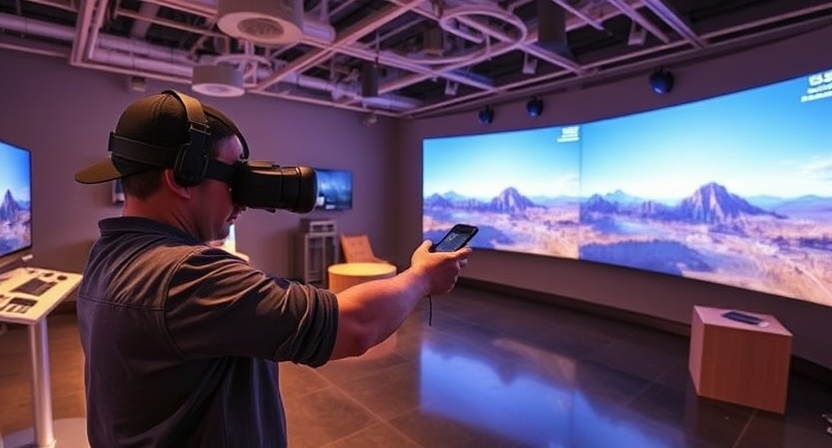
Moreover, the combination of 5G technology and virtual reality has significantly contributed to the realism of VR environments. The improved resolution and graphics quality made possible by 5G connectivity enhance the visual fidelity of virtual worlds, making them more lifelike and immersive for users. This heightened realism, coupled with the increased interactivity facilitated by 5G, creates a more convincing and immersive virtual experience that blurs the line between the virtual and physical worlds. The result is a more engaging and immersive VR experience that revolutionizes the way users interact with digital content and virtual environments.
Expanded Possibilities for Social VR Experiences
Social virtual reality experiences have witnessed a significant evolution with the advent of 5G technology. Users can now seamlessly connect with others in virtual environments, fostering a sense of presence and interaction previously unmatched. The low latency and enhanced speed provided by 5G enable real-time communication and collaboration, creating a more immersive and engaging social VR experience for individuals across the globe.
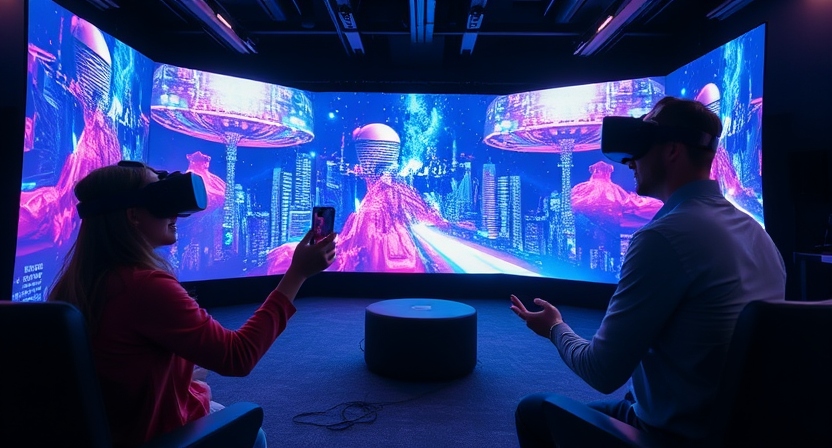
Furthermore, the improved resolution and graphics quality delivered by 5G technology enhance the visual appeal of social VR environments, making interactions more lifelike and realistic. Users can engage in social activities such as virtual gatherings, live events, and shared experiences with unparalleled clarity and detail, fostering deeper connections and relationships in virtual communities. The combination of 5G and social VR not only expands the possibilities for social interactions but also opens up new avenues for creativity, expression, and shared experiences in the virtual realm.
Revolutionizing Gaming and Entertainment Industry with 5G VR
The integration of 5G technology with virtual reality (VR) is set to revolutionize the gaming and entertainment industry. With the enhanced speed and low latency provided by 5G connectivity, gamers can expect more immersive and seamless experiences in VR environments. Imagine being able to explore expansive virtual worlds, engage in high-action gameplay, and interact with other players in real-time with unprecedented fluidity and responsiveness.
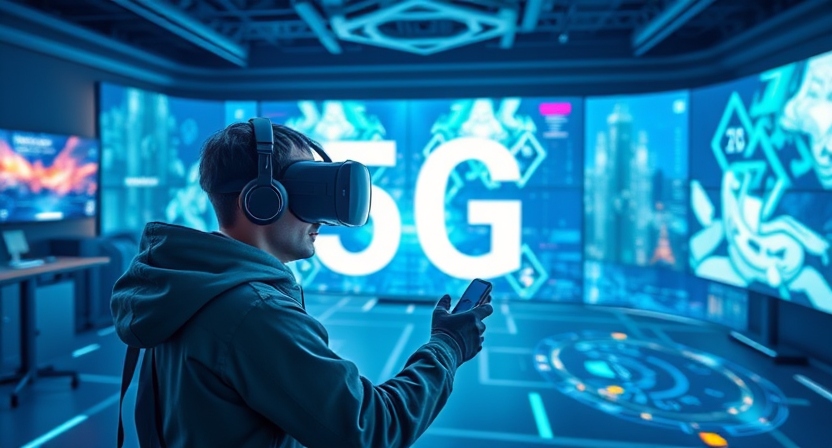
Moreover, the improved resolution and graphics quality powered by 5G VR will elevate the visual aesthetics of games and entertainment content to new heights. Players can enjoy stunning details, vibrant colors, and realistic textures that bring virtual worlds to life like never before. This advancement opens up a realm of possibilities for game developers and content creators to deliver truly captivating experiences that blur the lines between reality and virtuality.
Empowering Remote Collaboration and Communication through VR
VR technology has opened up new possibilities for remote collaboration and communication like never before. With the power of 5G connectivity, individuals can now engage in virtual meetings and work together in real-time regardless of their physical locations. This enhanced level of interactivity allows teams to brainstorm ideas, collaborate on projects, and communicate effectively as if they were in the same room, breaking down barriers of distance and time zones.
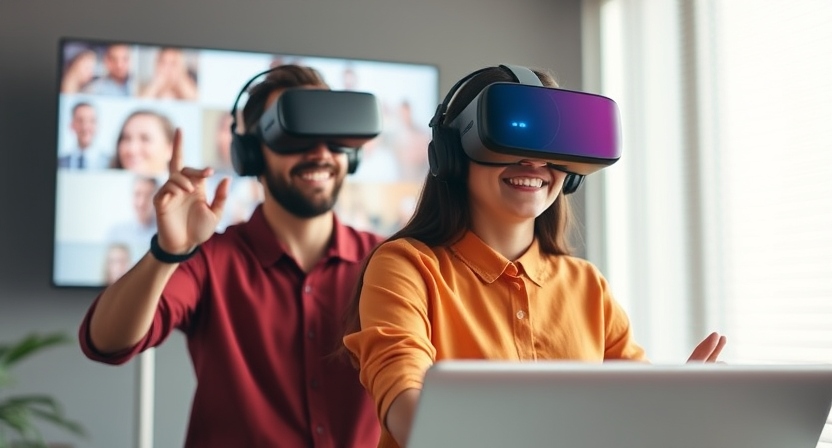
The immersive nature of VR environments further enhances the remote collaboration experience by fostering a sense of presence and engagement among team members. Whether it’s conducting virtual training sessions, hosting virtual conferences, or simply holding virtual team meetings, the integration of VR and 5G technology brings a new dimension to remote collaboration and communication. This transformative technology is revolutionizing the way teams work together, offering a more interactive, engaging, and impactful way to connect and collaborate remotely.
Transforming Education and Training with 5G-powered VR
The integration of 5G-powered Virtual Reality (VR) technology is revolutionizing the landscape of education and training. With the enhanced speed, low latency, improved resolution, and graphics quality offered by 5G connectivity, learners are now able to immerse themselves in realistic and interactive virtual environments that mimic real-world scenarios. This innovative approach to education and training not only captures the attention of students but also enhances their retention and understanding of complex concepts through experiential learning.

Moreover, the use of 5G-powered VR in education and training transcends geographical boundaries, making learning more accessible and inclusive. Students can participate in virtual classrooms, engage with diverse learning materials, and collaborate with peers in real-time, regardless of their physical location. This technology also opens up new possibilities for educators to create engaging and interactive lessons that cater to various learning styles, thus fostering a more dynamic and effective learning experience for learners of all ages.
Enhancing Healthcare and Therapy Services with VR and 5G
Virtual Reality (VR) technology, coupled with the ultra-fast connectivity of 5G networks, is revolutionizing the landscape of healthcare and therapy services. By immersing patients in realistic and interactive virtual environments, medical professionals can enhance treatments and rehabilitation processes. From providing distraction therapy during painful procedures to aiding in physical therapy sessions, VR powered by 5G opens up new avenues for improving patient outcomes and overall well-being.

Furthermore, the incorporation of VR and 5G in healthcare settings facilitates remote consultations, allowing patients to receive expert medical advice and support regardless of their geographical location. This technology also enables healthcare providers to conduct virtual training sessions, enhancing the skills of medical professionals and ensuring the delivery of high-quality care. With the seamless integration of VR and 5G, healthcare services become more accessible, efficient, and effective, ultimately reshaping the future of medical practices and therapy services.
Enabling Virtual Tourism and Experiential Marketing with 5G
Virtual tourism and experiential marketing are being transformed by the integration of 5G technology. With the ultra-fast speeds and low latency offered by 5G, virtual tourism experiences are becoming more immersive and realistic. Imagine exploring the streets of a foreign city or visiting historical landmarks in real-time, all from the comfort of your own home. 5G enables seamless streaming of high-quality virtual tours, allowing users to feel like they are actually there.
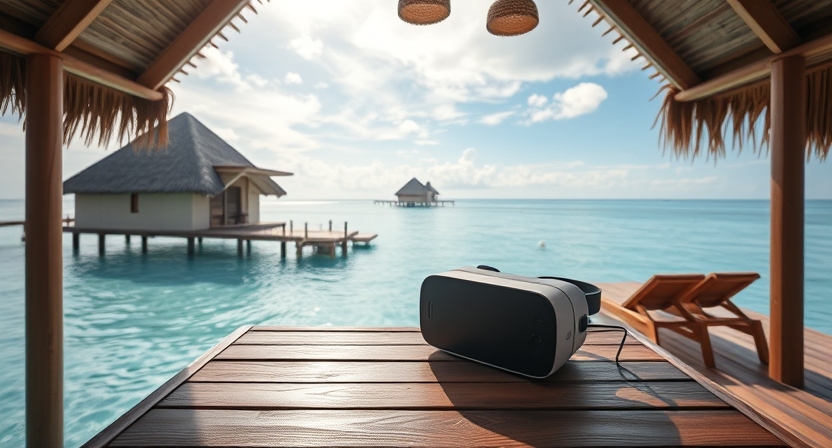
Moreover, experiential marketing is taking on a new dimension with the help of 5G-powered virtual reality. Brands are now able to create interactive and engaging experiences for customers, offering them a closer look at products and services in a virtual environment. This enhanced level of personalization and engagement can lead to a deeper connection between consumers and brands, ultimately driving sales and brand loyalty. In this digital age, 5G is revolutionizing the way we explore the world and interact with businesses, making virtual tourism and experiential marketing more accessible and engaging than ever before.
Facilitating Virtual Shopping and Retail Experiences with 5G
Virtual shopping and retail experiences are undergoing a significant transformation with the integration of 5G technology. With enhanced speed and low latency, consumers can immerse themselves in virtual stores with seamless interactions and realistic product displays. The improved resolution and graphics quality offered by 5G enable shoppers to have a more engaging and detailed shopping experience, almost as if they were physically in the store.

Furthermore, the increased accessibility to virtual shopping content with 5G connectivity allows retailers to reach a broader audience and cater to the evolving needs of consumers. As virtual shopping becomes more prevalent, it opens up new avenues for personalized shopping experiences and innovative marketing strategies. By leveraging the power of 5G in virtual retail environments, businesses can revolutionize the way consumers shop and interact with brands, creating a more immersive and convenient shopping experience for all.
Driving Innovation in Architecture and Design through VR and 5G
Architecture and design are undergoing a transformative evolution propelled by the integration of Virtual Reality (VR) technology and 5G connectivity. This dynamic fusion is revolutionizing the way architects and designers conceptualize, visualize, and communicate their creative ideas. By immersing users in virtual environments, VR enables unparalleled exploration of architectural spaces, allowing for real-time adjustments and enhancements with precision and efficiency. Furthermore, the high-speed, low-latency nature of 5G connectivity ensures seamless collaboration among stakeholders, regardless of their physical locations, fostering enhanced communication and decision-making processes in the field of architecture and design.
The marriage of VR and 5G is unlocking a realm of possibilities in architectural innovation, enabling professionals to push the boundaries of creativity and functionality in their designs. Architects can now walk clients through virtual buildings, providing immersive experiences that simulate real-world interactions with spaces before construction commences. This level of immersion not only enhances client engagement and understanding but also facilitates more informed design iterations and improvements. Additionally, the integration of 5G connectivity ensures that these virtual experiences are delivered in real-time, fostering quick feedback loops and enabling architects to adapt designs promptly based on stakeholder preferences and specifications.
Revamping the Sports and Events Industry with 5G VR Solutions
The integration of 5G technology with virtual reality (VR) is poised to revolutionize the sports and events industry in unprecedented ways. With the ultra-fast speeds and low latency offered by 5G connectivity, sports fans and event attendees can immerse themselves in live games and experiences like never before. This technology enables real-time streaming of high-quality VR content, providing viewers with a front-row seat to their favorite sports matches, concerts, or other events from the comfort of their homes.
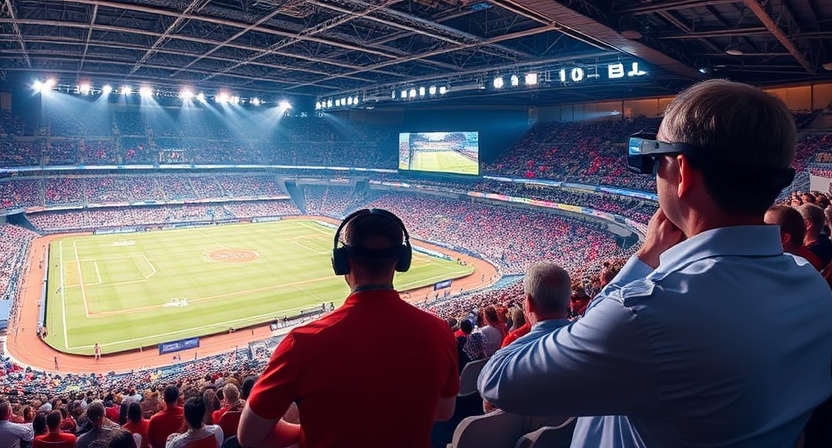
Moreover, the enhanced interactivity and realism brought by 5G-powered VR solutions open up new possibilities for engaging with sports events and entertainment experiences. Fans can now enjoy unique perspectives, interactive features, and personalized content tailored to their preferences, creating a more dynamic and engaging viewer experience. This seamless integration of 5G and VR technology promises to transform how sports and events are watched, experienced, and enjoyed by audiences worldwide, reshaping the landscape of the industry for years to come.
Empowering Virtual Workspaces and Productivity Tools with 5G
Virtual workspaces and productivity tools are undergoing a significant transformation with the integration of 5G technology. The enhanced speed and low latency provided by 5G networks facilitate real-time collaboration among team members located in different parts of the world. This seamless connectivity enables professionals to work together more efficiently, regardless of their physical location, ultimately boosting productivity and streamlining workflow processes.

Moreover, the increased accessibility to high-quality VR experiences through 5G opens up new possibilities for enhancing virtual workspaces. With improved resolution and graphics quality, professionals can engage in immersive virtual meetings, presentations, and simulations with unparalleled realism. This immersive environment fosters creativity, innovation, and engagement, creating a conducive space for effective collaboration and productivity within virtual teams.
Improving Mental Health and Well-being through VR Therapy and 5G
Virtual reality (VR) therapy, combined with the power of 5G connectivity, is offering innovative solutions for enhancing mental health and well-being. By immersing individuals in interactive and personalized virtual environments, VR therapy can provide a unique platform for therapeutic interventions. This technology enables users to engage in immersive experiences that can aid in managing stress, anxiety, PTSD, and other mental health conditions.

The low latency and high-speed capabilities of 5G networks further enhance the effectiveness of VR therapy by ensuring seamless connectivity and real-time interactions. This advancement allows for a smoother and more immersive experience, enhancing the therapeutic benefits for individuals undergoing VR therapy sessions. With the combined potential of VR and 5G, mental health professionals can explore new avenues for delivering therapy, offering more accessible and impactful solutions for improving overall well-being.
Supporting Environmental Conservation Efforts with VR and 5G
Virtual reality (VR) technology powered by 5G is proving to be a valuable tool in supporting environmental conservation efforts. By immersing users in realistic simulations of natural habitats and wildlife, VR experiences can foster a greater appreciation for the importance of preserving our planet’s biodiversity. Through interactive educational programs and virtual tours of endangered ecosystems, individuals can gain a deeper understanding of environmental issues and be inspired to take action towards conservation.

Furthermore, the combination of VR and 5G technology enables researchers and conservationists to remotely monitor and analyze environmental data with unprecedented detail and efficiency. By gathering real-time information on wildlife behavior, habitat conditions, and climate patterns through VR simulations, conservation efforts can be more targeted and effective. This innovative approach not only enhances scientific research and monitoring capabilities but also amplifies outreach and engagement opportunities for raising awareness about environmental conservation on a global scale.
Enabling Immersive Storytelling and Content Creation with 5G VR
With the integration of 5G technology into virtual reality (VR) experiences, the realm of immersive storytelling and content creation has reached unprecedented levels of realism and engagement. The ultra-fast speeds and low latency provided by 5G connections allow creators to seamlessly transport audiences into interactive narratives and visually stunning worlds, blurring the lines between fiction and reality. This transformative combination empowers storytellers, filmmakers, game developers, and content creators to craft dynamic and captivating experiences that captivate audiences like never before.
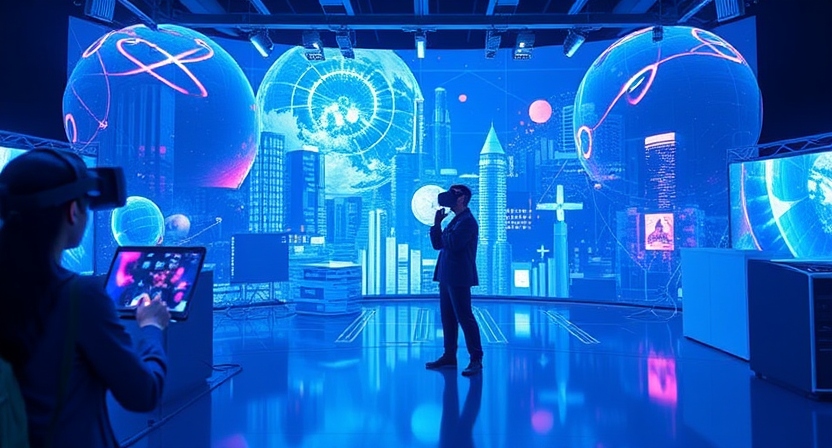
Furthermore, the enhanced interactivity and realism in VR environments made possible by 5G connectivity enable users to actively participate in the narrative, making decisions that shape the outcome and immerse themselves fully in the storytelling process. This level of engagement not only serves as a form of entertainment but also opens up new avenues for educational content, training simulations, and experiential marketing. As VR technology continues to evolve in tandem with 5G capabilities, the potential for innovative storytelling and content creation seems limitless, promising a future where audiences can step into worlds limited only by imagination.
Enhancing Accessibility and Inclusivity in VR Experiences through 5G
In the realm of virtual reality (VR), the integration of 5G technology has paved the way for enhanced accessibility and inclusivity in immersive experiences. By leveraging the high-speed connectivity and low latency offered by 5G networks, VR applications are now more readily available to a broader audience, breaking down barriers that once hindered participation. This technological synergy has significantly improved the user experience for individuals with varying abilities, ensuring that everyone can engage with VR content seamlessly and enjoy a rich and interactive virtual environment.
Moreover, the combination of VR and 5G has enabled developers to innovate in creating customizable settings and features that cater to diverse needs and preferences. From adjustable controls and interfaces to personalized content recommendations, users can now tailor their VR experiences to align with their specific requirements, making the virtual world more welcoming and accommodating for all. This inclusive approach not only fosters a sense of belonging and empowerment but also opens up a new frontier of possibilities for education, communication, and entertainment in the ever-evolving landscape of VR technology.
